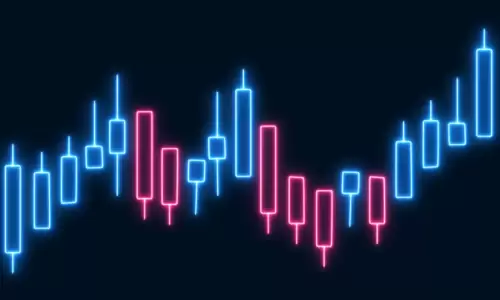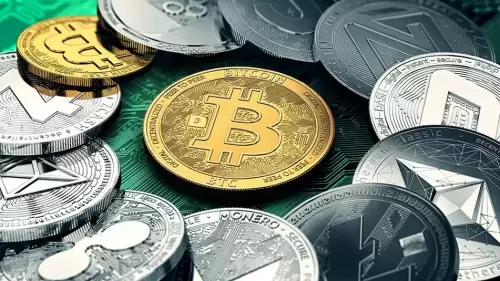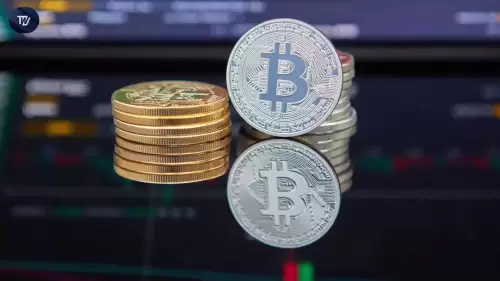 |
|
 |
|
 |
|
 |
|
 |
|
 |
|
 |
|
 |
|
 |
|
 |
|
 |
|
 |
|
 |
|
 |
|
 |
|
Articles d’actualité sur les crypto-monnaies
Safe-Haven Frenzy Ignites Gold Market: Investors and Central Banks Scramble for Bullion
May 01, 2025 at 10:24 am

Investors and institutions are flocking to gold in record numbers as they seek safety from escalating economic risks and geopolitical uncertainty, according to the World Gold Council’s (WGC) Q1 2025 Gold Demand Trends Report. Released Wednesday, the report reveals that global gold demand surged to its strongest first-quarter performance since 2016.
Despite a slight 1% decrease from the fourth quarter of 2024, global gold demand reached 1,206 metric tons in Q1 2025. This marks a 24% increase compared to the first quarter of 2024. Across major asset classes, only equities experienced a faster rate of recovery from 2024 lows.
Chart of the Day: Exploding Investment Demand As ETFs Return From Years Of Stagnation
A vivid chart showcasing the breakdown of gold demand components. Notably, gold ETF investments rebounded sharply in Q1 2025, driven by rising economic and geopolitical uncertainty. Credit: World Gold Council.
After years of stagnation, gold-backed ETFs saw a dramatic return with a record 226.5 metric tons of inflows. This is a stark reversal from the 113 tons of net outflows seen in Q1 2024. Meanwhile, retail investors continued their strong appetite for gold bars and coins, with demand rising 3% year-on-year to 325.4 tons.
“We are seeing a resonance between East and West in terms of gold accumulation, with Asian investors, particularly in China, driving this momentum,” said Joseph Cavatoni, Senior Market Strategist at the WGC.
“We saw Chinese gold ETF inflows outpace those in North America. The fact that gold prices remain high despite this sustained level of ETF buying activity is a testament to the fundamental buying pressure that is pushing up prices,” Cavatoni added.
He explained that this contrasts with markets quickly unwinding any signs of a price bubble in other asset classes, such as cryptocurrencies.
World Gold Council: Central Bank Buying Slows But Strategic Role Remains
Central banks reduced their gold purchases by 21% from the previous quarter’s record pace, adding 243.7 tons to reserves. However, this figure is still 24% above the five-year quarterly average and represents the 16th consecutive quarter of net central bank buying.
After reaching record highs in 2022 and 2024, it appears that the pace of central bank gold buying has slowed somewhat, as evidenced by a 37% decrease in net purchases compared to Q4 2024.
Nevertheless, gold's role as a geopolitical hedge and reserve diversifier remains crucial, especially amid global instability, which is expected to continue in 2025.
“Despite the slowdown in central bank purchases, it’s important to remember that we are still observing a level of demand that is significantly elevated compared to the long-term average. This sustained demand over 16 years underscores the enduring role of gold in central bank portfolios, particularly as they navigate a rapidly changing macroeconomic landscape,” Cavatoni explained.
Tech Sector Emerges As ‘Unsung Hero’ As Jewelry Consumption Plummets
Industrial gold demand remained stable at 80.5 tons, used mainly in the technology sector for electrical conductivity and heat resistance in components. This marks a slight decrease of 0.4 tons compared to the previous quarter.
On the other hand, jewelry consumption globally plummeted by 21% to 380.3 tons, reaching its lowest level since the pandemic lockdowns in 2020.
China saw the most significant decline in jewelry demand with a 35% drop, largely due to record-high gold prices that pushed consumers toward lighter-weight pieces or pure investment products.
Overall, total gold demand edged up 1% to 1,206 tons, driven by record Q1 mine production of 856 tons—the highest since 2000. Recycling dipped 1% to 345 tons.
Investors aren't fixated on reaching $3,000 like some market chatter suggests. They are focused on a broader macroeconomic backdrop of rising debt levels and fractured alliances, which continues to drive demand for gold as a portfolio stabilizer, Cavatoni concluded.suggest
Clause de non-responsabilité:info@kdj.com
Les informations fournies ne constituent pas des conseils commerciaux. kdj.com n’assume aucune responsabilité pour les investissements effectués sur la base des informations fournies dans cet article. Les crypto-monnaies sont très volatiles et il est fortement recommandé d’investir avec prudence après une recherche approfondie!
Si vous pensez que le contenu utilisé sur ce site Web porte atteinte à vos droits d’auteur, veuillez nous contacter immédiatement (info@kdj.com) et nous le supprimerons dans les plus brefs délais.
-

-

- Core Scientific (Corz): l'objectif de prix de Needham et la mise à l'envers de l'exploitation bitcoin
- Jun 20, 2025 at 10:25 pm
- L'analyste de Needham, John Todaro, augmente l'objectif de prix de Core Scientific, mettant en évidence la confiance du marché de l'entreprise et l'évaluation attrayante au milieu de la demande croissante d'infrastructures d'extraction de Bitcoin.
-

-

-

- Parataxis Holdings & Bridge Biotherapeutics: A Bitcoin Treasury joue en Corée du Sud
- Jun 20, 2025 at 08:25 pm
- Parataxis Holdings s'associe à Bridge Biotherapeutics pour lancer une plate-forme de trésorerie native bitcoin en Corée du Sud, signalant une intérêt institutionnel croissant pour les actifs numériques.
-

-

-

- Programme de surtension DYDX: nivellement de la transmission avec des incitations avec des incitations
- Jun 20, 2025 at 08:45 pm
- Plongez dans le programme DyDX Surge, une initiative révolutionnaire dans le trading Defi, offrant 20 millions de dollars de récompenses et une approche décentralisée et axée sur la communauté.
-






























































